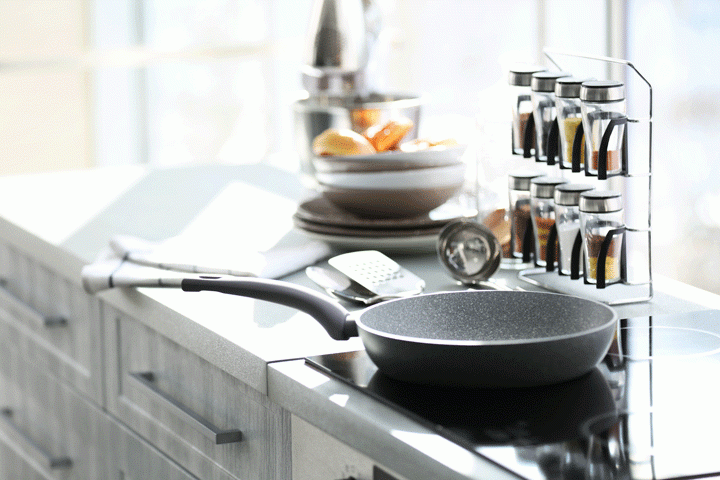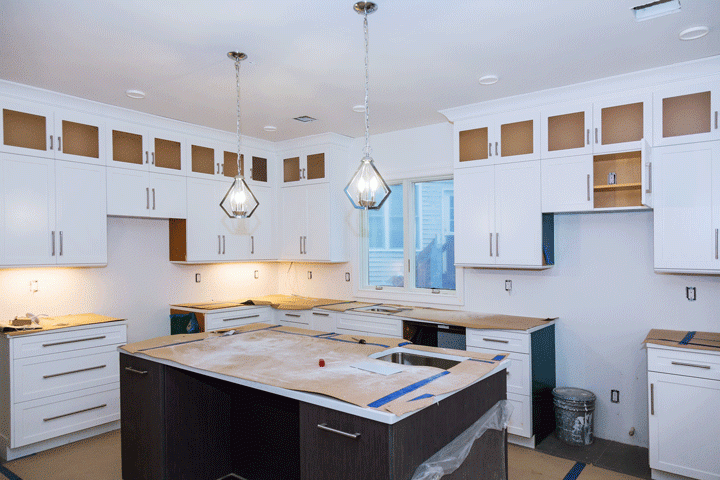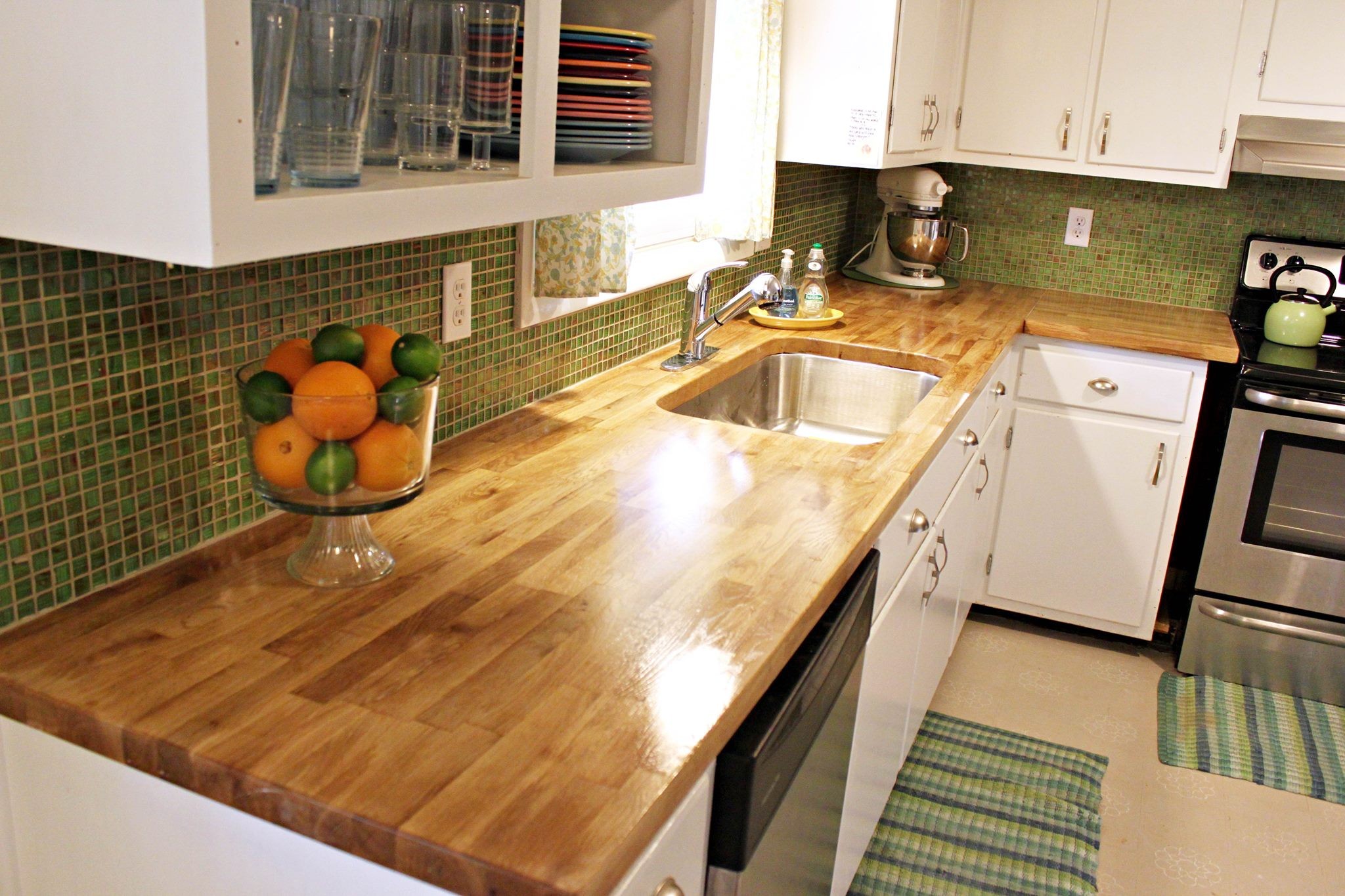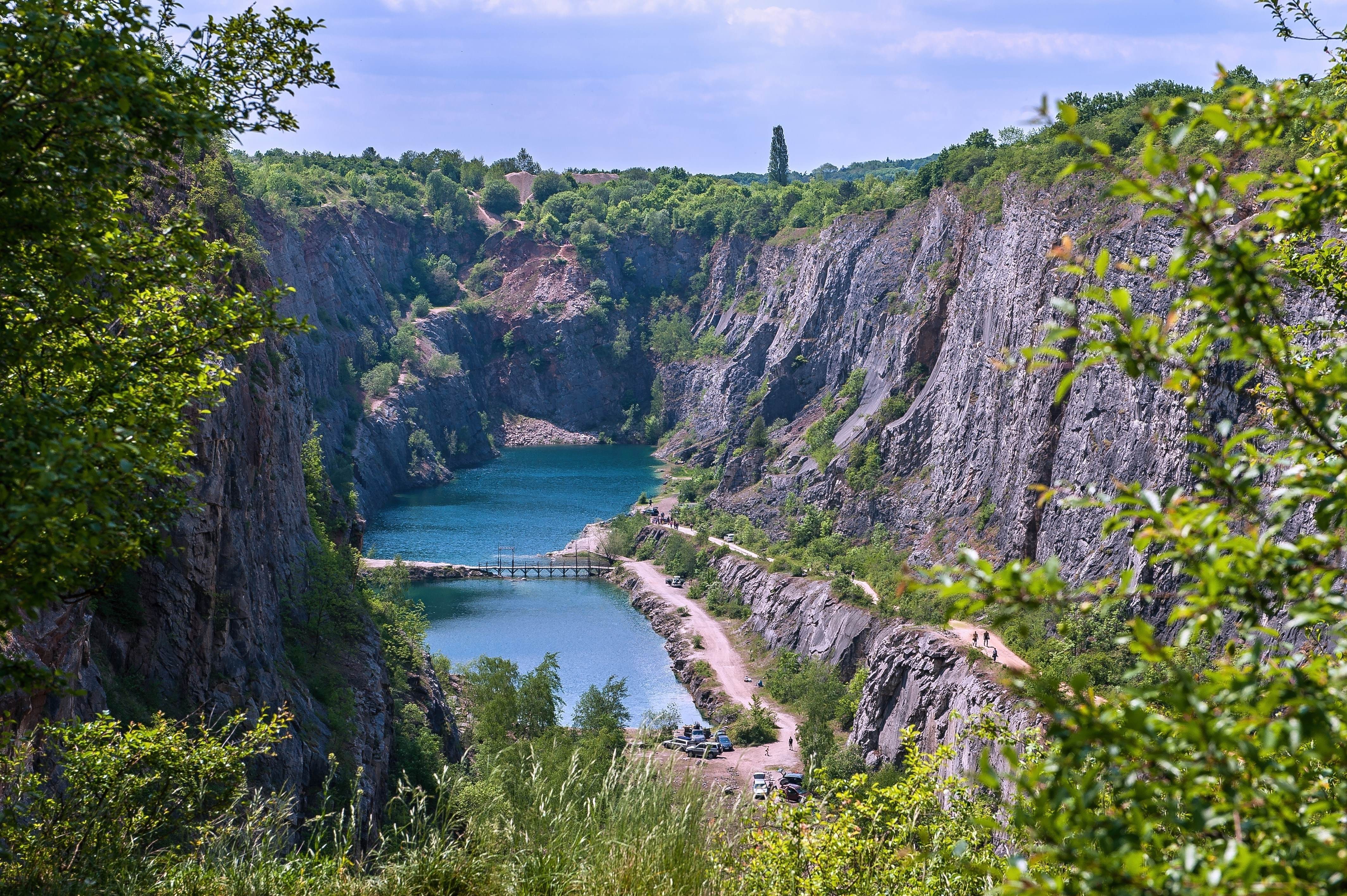
Table of Contents
Granite countertops originate from igneous rock, which is rock that is formed by the cooling and solidification of lava or magma. This process occurs at very high temperatures. As for the countertops, granite surfaces are heat resistant. Granted, this does not mean they are totally heat proof, but rather that it is very unlikely that your surfaces will be damaged by heat. Because granite is so tough, many homeowners ask, “Can you put hot pans on granite countertops?” This guide will provide you with the answer to that question and more.
Can Granite Countertops Get Damaged from Hot Pans?
The answer to the question above is not necessarily. These natural stone surfaces are among the most resistant to heat that you can find for kitchen countertops or other home surfaces. Placing hot pots, hot pans and hot items in general will not damage your granite countertop. That said, over time, exposure to excessive heat can weaken the seal on your granite countertop, which in turn can leave the surface more exposed to staining, liquid damage, etc.
[get_quote]
What is Thermal Shock?
For granite countertops, thermal shock occurs when the surface is exposed to extreme temperatures, whether that is extreme heat or extreme cold. When this occurs, your countertop can crack. However, keep in mind that thermal shock is extremely rare. It is highly unlikely that your countertop would be exposed to the temperature levels necessary to cause this type of damage.
What Can You Do to Protect Your Granite Countertops?
Granite countertops are not like quartz countertops (which can sustain burn marks and discoloration from hot pans) or laminate countertops, which are more prone to many types of damage in general. Although this is the case, it is always a good idea to do as much as you can to protect any countertop.
For granite, protection means you should use trivets, hot pads, potholders and cutting boards during meal preparation. You should also use coasters underneath your beverage glasses.
But most importantly, you will need to make sure you are keeping up on re-sealing your granite countertops. The majority of stone countertops require re-sealing, and with practically every other natural stone countertop material, you will have to repeat this process more often that you will have to with granite.
On average, your granite countertop will only need to be re-sealed about once per year. This can depend on the specific type of granite that you have, as some can require more frequent sealing than others. Even other tough and durable natural stones, like quartzite, need to be sealed at least twice per year.
How Do You Re-Seal a Granite Countertop?
Sealed granite will be very resistant to numerous household hazards (stains, liquid damage, etc.). To re-seal your granite countertop, all you will need to do is follow a quick and simple process, outlined in the table below (followed by additional detail for each of the steps).
| Step 1 | Select your sealer |
| Step 2 | Clear off and clean your granite countertop |
| Step 3 | Apply the sealer |
| Step 4 | Wait for 15 minutes |
| Step 5 | Wipe off any excess sealer |
| Step 6 | Let the countertop sit for at least 24 hours |
Select Your Sealer
To begin, you will need to choose your desired sealant. One of the best products for sealing is Laticrete StoneTech BulletProof Sealer. However, it is not the only good product you can find. Some sealers, like this one, even come in an easy-to-use spray bottle.
Clear Off and Clean Your Granite Countertop
Next, you will need to clear any items off your granite countertop and give it a good cleaning. A good cleaning involves using a granite cleaner, not just soap and water. Once the surface is all clean, you can move on to the next step.
Apply the Sealer
The third step of the process involves applying the sealer. Either apply with a brush or spray it on if the product comes in a spray bottle.
Wait for 15 Minutes
After you apply the sealer, wait for 15 minutes. If you notice that all the sealer has absorbed during this time, you will need to re-apply another coat.
Wipe Off Any Excess Sealer
Once the 15 minutes is up, you can wipe off any excess sealer that remains on the surface.
[get_quote]
Let the Countertop Sit for At Least 24 Hours
The last part of the sealing process is letting your countertop sit for at least 24 hours without use. Once you have done this, your granite countertop is all sealed and should not need another application for about a year (depending on the specific type).
Granite countertops are as close as you can get to being indestructible for a natural stone surface. The countertops are not only beautiful, but are durable, scratch resistant, heat resistant, stain resistant and more. With that in mind, keeping your stone beautiful for years on end will require you to take care of it and exercise as much caution as you can. By following the steps in this guide, you can do exactly that.
















 The article helped me immensely
The article helped me immensely
 I’m now more informed on the subject
I’m now more informed on the subject
 I have questions about Marble.com
I have questions about Marble.com
 The article was not accurate at all
The article was not accurate at all
 There is a serious lack of information
There is a serious lack of information
 I have questions about Marble.com
I have questions about Marble.com